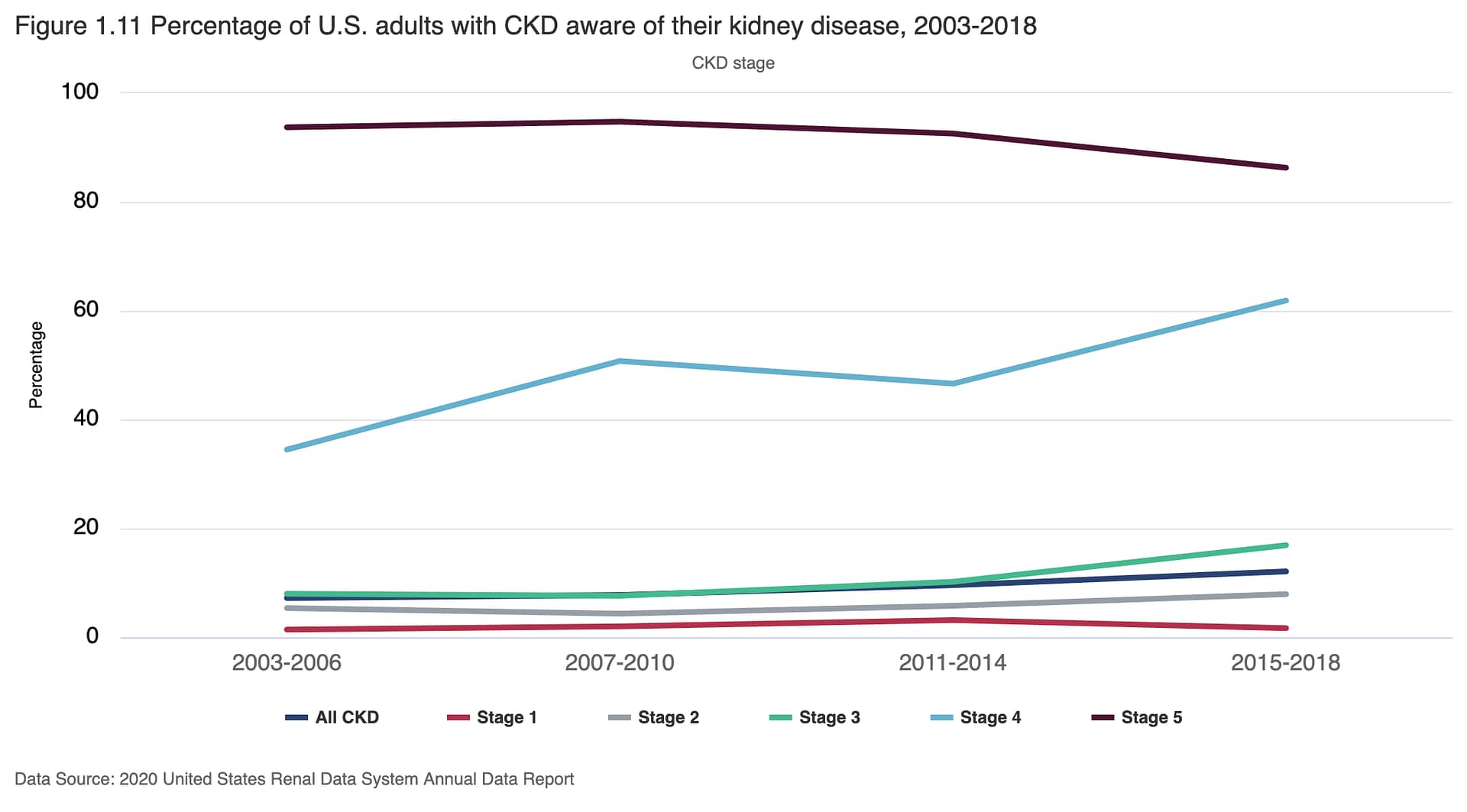CKD is essentially kidney damage from one or multiple causes such as diabetes, high blood pressure, obesity.
Statistics:
Approximately 15% of the adult US population are living with kidney disease (USRDS Annual data 2020).
-fig 1.11 https://adr.usrds.org/2020/chronic-kidney-disease/1-ckd-in-the-general-population
How do I know if I have Chronic Kidney Disease (CKD)?
There are multiple ways to analyze kidney function, but the easiest and most common test is the blood level of Creatinine. The overall diagnosis of CKD is complicated and is based on blood creatinine level and estimated GFR (glomerular filtration rate) and measuring urinary protein level. I usually explain Creatinine as a normal protein that is made by your muscles and not a problem itself. It exists in the blood and is freely filtered out by the kidneys; and, therefore we use it as a marker of kidney filtering function. If you have less than normal kidney function, then the kidneys filter out less of the Creatinine protein, thus it builds up in your blood at higher levels. If you plug the Creatinine test result into the GFR calculator (also with your other information: age, sex race, etc) then that gives your the GFR result. CKD stages are based on this result.
What are the Stages of Chronic Kidney Disease (CKD):
The Diagnosis of CKD is made based on blood creatinine level and estimated GFR (glomerular filtration rate) and measuring urinary protein level. The GFR is basically a calculation based on the serum creatinine value and it incorporates your other personal information like age, sex, race, and height. There are many different GFR calculators out there. This is sometimes reported as the estimated GFR, or eGFR, and these are similar for practical purposes. Your stage of CKD is based on your level of eGFR.
- Stage 1 CKD: eGFR 90 or Greater, or other kidney disease like proteinuria
- Stage 2 CKD: eGFR Between 60 and 89
- Stage 3a CKD: eGFR Between 45 and 59
- Stage 3b CKD: eGFR Between 30 and 44
- Stage 4 CKD: eGFR Between 15 and 29
- Stage 5 CKD: eGFR Less than 15
See these websites for more details: https://www.kidneyfund.org/kidney-disease/chronic-kidney-disease-ckd/stages-of-chronic-kidney-disease/
https://www.kidney.org/kidneydisease/siemens_hcp_quickreference
Once a diagnosis of CKD is made it is important you follow up with your doctor at regular intervals, particularly if you have a chronic health condition such as high blood pressure, diabetes, or have a family history of kidney disease.
What does it mean that I have Protein in my Urine?
Protein in the urine, or Proteinuria, is a significant abnormal finding that needs to be discussed with your doctor. We all have a very small amount of proteinuria normally. However, many different disease states and kidney diseases will increase this protein content. The first thing that people ask me is usually, “Am I eating too much protein?” Not exactly – these are blood proteins that are leaking through the kidneys into the urine. Eating less protein might help, but the important thing to understand is the underlying kidney injury causing the issue. This is a very long and complicated topic that cannot be completely explored here. Initial testing can be done with a Urinary dipstick (urinalysis) or other spot urine testing. Confirmatory testing is usually needed with a 24 hour urine collection. Higher levels of proteinuria are associated with



